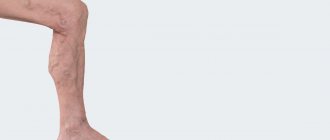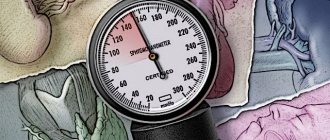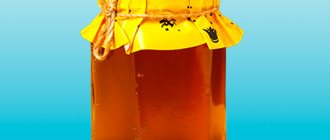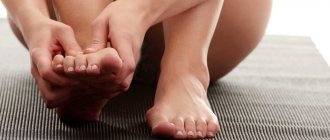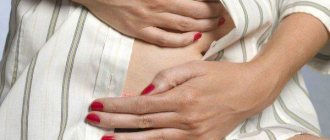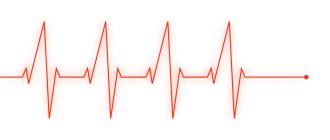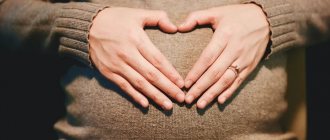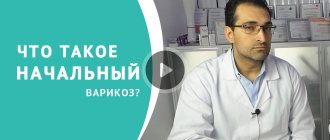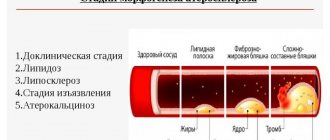Patients often try to treat varicose veins with folk remedies at home - based on plant extracts, they even produce preparations for external use and oral administration, many of which are positioned as means for completely getting rid of vein diseases. They are widely advertised and sold without a doctor's prescription. But, unfortunately, this attitude towards traditional methods in the case of varicose veins is not entirely correct.
Watch the video!
Phlebologists talk about traditional methods of treating varicose veins - popular methods and their real effect on varicose veins.
Phlebologists do not consider traditional methods as the main method of treating varicose veins of the lower extremities - traditional medicine can be effective in complex therapy and can only reduce symptoms.
Why does herbal medicine not cure varicose veins?
The use of various plant-based remedies is not able to relieve the patient of varicose veins even in the initial stages of the disease. This cannot be achieved by drug therapy and other conservative methods recommended by official medicine.
Changes in the walls of veins with varicose veins are irreversible. And not a single product of natural or pharmaceutical origin can eliminate these characteristic disorders or at least reliably stop their progression. Currently, there are no drugs that lead to regression of phlebosclerosis and restoration of the normal structure of the vascular wall.
In many cases, patients have a hereditary predisposition to varicose veins of the lower extremities.
Factors for the development of varicose veins:
- Genetically determined “weakness” of the venous walls, which in fact can withstand only a normal level of intravascular pressure without consequences.
- A small number of intravenous valves are present in utero, which may be a family or even racial trait.
Of course, all this cannot be eliminated with the help of herbal remedies or other non-surgical techniques. Therefore, there is no need to talk about curing varicose veins with the help of conservative therapy, no matter what advertising and publications promise.
Improvement in the condition while taking medications or herbal remedies only indicates compensation for existing venous insufficiency. The duration of this remission period depends on many factors. And the continuation of herbal medicine does not at all guarantee a low probability of resumption of symptoms and prevention of the development of complications.
However, herbal-based products can still be used in the complex treatment of varicose veins of the lower extremities. Moreover, some healing extracts formed the basis of a number of modern drugs. So patients can refuse to independently prepare decoctions and infusions for oral administration. Many people prefer standardized pharmaceutical products with adjusted dosage, ease of administration and predictable action.
Herbal medicine (herbal treatment) for varicose veins
Currently, herbal medicine as an independent method of treating varicose veins is not seriously considered by either herbalists or their opponents. Herbal medicine can only be used as a supplement to the main course of treatment or it can be recommended as a preventative measure. Certain combinations of herbs, when used correctly and regularly, help strengthen and increase the tone of the venous wall, help prevent the formation of blood clots, and have an anti-inflammatory effect. The most famous and proven herbal medicine, long accepted in classical medicine, is horse chestnut. Various remedies are prepared from flowers, fruits or leaves for external or internal use, strengthening the venous wall, relieving inflammation, thinning the blood and reducing its coagulation activity. Verbena and red grape leaves are also among the well-known venotonics. Horsetail, knotweed and lungwort help strengthen the venous wall and normalize metabolic processes in connective tissue. Dandelion has approximately the same properties thanks to phospholipids, which are part of all parts of the plant.
To improve blood circulation in the capillaries and prevent thrombosis, plants are used that contain various groups of substances - coumarins or salicylates (the effect of the latter is similar to acetylsalicylic acid, or aspirin), which reduce blood clotting: sweet clover, toadflax, meadowsweet, raspberry, peony and others.
To one degree or another, almost all of the herbs listed have an anti-inflammatory effect, but this property is most strongly expressed when using plants rich in tonins and gallic acid: bergenia root, buckthorn leaf or oak bark.
Thus, herbal medicine can be used in the treatment of varicose veins, but only as an addition to surgical or other (more or less) radical treatment.
What is the effect of herbal medicine and traditional methods?
For varicose veins, chamomile, horse chestnut, aromatic rue, horsetail, dandelion, meadow lumbago (sleep grass), bird knotweed (knotweed) and a number of other plants are most often used for medicinal purposes.
Chamomile helps relieve the symptoms of varicose veins in the early stages - it reduces the inflammatory process and the visibility of the affected veins. Chamomile tea and compresses have a minimum of contraindications and can be recommended by specialists in complex therapy (1, English).
Dandelion is a popular remedy for varicose veins. Dried roots and stem are added to tea and also when taking a bath. It relieves mild pain, but does not have a therapeutic effect.
The effect of folk remedies
Herbal medicine has a limited effect on affected veins:
- Phlebotonic effect - increasing the tone of the veins. But do not forget that with varicose veins, the structure of the affected vessels irreversibly changes. In their walls, not only does the amount of connective tissue significantly increase (which is called phlebosclerosis), but the structure of the muscle layer is also disrupted. Therefore, already deformed veins will give an insufficient response to phlebotonic substances. Their lumen can be narrowed mainly with the help of potent compounds - for example, ergot alkaloids. But the side effects from such herbal medicine will be significant. Therefore, phlebotonic plants are used rather to reduce the severity of venous insufficiency and for preventive purposes.
- Compaction of the vein, due to which the process of its deformation is somewhat restrained. This effect can be used in complex prevention in individuals at risk. But it will still not be possible to stop, let alone reverse, existing varicose veins in this way.
- Antithrombotic and disaggregation effect, which reduces the risk of thrombosis and has a beneficial effect on microcirculation. But this effect can be expected only with sufficiently long-term use of decoctions and infusions. In addition, blood thinning will not occur locally in the area of varicose veins, but throughout the body. In some patients, this can lead to complications of other diseases.
- Anti-inflammatory and wound-healing effect, manifested mainly in local herbal medicine for trophic ulcers and eczematous venous dermatitis. But without eliminating venostasis (the key cause of these complications), it will not be possible to achieve lasting normalization of the skin condition.
As you can see, the symptoms of the disease will decrease only temporarily, and varicose veins will not completely disappear.
Varicose veins - causes
There are only a few main causes of the disease:
- Sedentary work or work that requires constant standing
- Obesity
- Heredity
- Age and gender. The greatest likelihood of developing varicose veins in women is 30-40 years old.
Phlebologists who treat varicose veins and Wikipedia claim that in a healthy person, blood flows through the veins from bottom to top. This is ensured thanks to:
- Rhythmic contractions of the heart
- The presence of valves in the veins
- Working the leg muscles
High static loads or reduced physical activity cause an increase in venous pressure in the lower extremities. The vessels cannot withstand such tension and begin to stretch, and their walls become thinner. This leads to the appearance of a gap between the valve and the vessel, the blood flow goes in the opposite direction, which is called reflux.
Apitherapy for varicose veins
Apitherapy or “bee therapy” is the use of bee venom and various bee products for medicinal purposes. Recommendations for the use of honey and propolis as compresses for trophic ulcers and the presence of visible varicose veins are quite common. Some also resort to apitoxin therapy sessions, deliberately achieving bee stings in the projection of the most affected vessels.
Honey and propolis in the form of compresses are used to relieve swelling and pain.
Apitherapy is a classic folk method of treating varicose veins of the legs, let’s consider the expected effect and the possibility of its occurrence:
- Improving tissue trophism and providing them with vitamins and microelements contained in honey. In reality, there is no improvement - the penetration of components through the skin is insignificant to speak of a significant therapeutic effect. In addition, a dense mass of honey can clog pores and thereby worsen the condition of the dermis.
- In the presence of a trophic ulcer - the antimicrobial effect of applying honey compresses. The highly digestible carbohydrates of this beekeeping product can become a breeding ground for opportunistic microorganisms. This can lead to the exact opposite effect, especially in the conditions of skin dysbiosis that occurs with varicose veins and against the background of a decrease in local immunity.
- Anti-inflammatory effect of honey compresses. Yes, honey can reduce the severity of nonspecific inflammation. But in the case of varicose veins, key changes occur in the wall of the subcutaneous vessel, and biologically active substances through the skin are still not absorbed well enough. Honey is a highly allergenic product; it is possible that local allergic reactions similar to inflammation may develop - this will not improve the condition of the legs.
- Fighting thrombosis (with apitoxin therapy), which is explained by the presence of a hirudin-like substance in bee venom. Trying to use this effect, apitherapists often plant stinging bees on areas of the veins affected by thrombophlebitis. In some cases, this actually activates thrombolysis (resorption of the blood clot). But such a rather aggressive and not completely controlled effect can provoke thromboembolism and increase the severity of phlebitis.
- Improving microcirculation under the influence of peptides contained in bee venom. Indeed, these biologically active substances contribute to the expansion of capillaries and blood flow to the areas inflamed after bee stings. Bee sting sessions can potentially improve the condition of the soft tissues of the legs affected by varicose veins. But apitoxin therapy is also accompanied by inflammation and swelling, which aggravates existing disorders. The wounds formed after the removal of the sting serve as entry gates for bacteria - the risk of developing erysipelas and other very undesirable infectious complications.
- Restoration of venous walls under the influence of bee venom. The peptides and other substances it contains, with repeated stings, change all tissues in the area of developing inflammation. The skin thickens, the subcutaneous tissue becomes coarser, the walls of the subcutaneous vessels thicken, and varicose veins become less noticeable. But this does not mean that uneven phlebosclerosis and the nodular deformities of veins that arise against its background completely disappear. They are only compensated, which is accompanied by a temporary stabilization of the course of chronic venous insufficiency. And valvular sclerosis is not eliminated by apitherapy.
Apitherapy is indeed a very powerful means of traditional medicine, but with varicose veins it is fraught with the development of infectious complications. It will not be possible to restore the walls of the veins with such treatment; it is only possible to stabilize the course of the disease and relieve symptoms (2, English).
Varicose veins: symptoms and stages of the disease
The clinic of varicose veins is determined by the stages of the disease:
- Stage 0. The first symptoms are heaviness and fatigue in the legs after a working day, swelling of the ankles, feet and lower legs in the late afternoon. In this case, all symptoms disappear after a night's rest or after active walking.
- Stage 1. Symptoms of stage 0 include spider veins on the legs, pain along the veins and rare night cramps in the calves.
- Stage 2. At this stage, veins and nodules can already be felt on the skin, which appear after a long sitting or standing position. Already at this stage, the likelihood of blood clots is high.
- Stage 3. In addition to all the above symptoms, there is constant swelling in the late afternoon, which may not go away completely in the morning.
- Stage 4. The skin on your legs may become dark in color. Skin atrophy appears.
- Stage 5. Trophic ulcers appear that are capable of healing.
- Stage 6. Trophic ulcers do not heal.
Do leeches treat varicose veins?
Leeches have long been used in the treatment of blood and vascular diseases.
The risk of thrombosis is reduced, and pain is temporarily reduced. Treatment with leeches (hirudotherapy) is a popular method of treating varicose veins and other vascular diseases, eliminates symptoms, improves tissue trophism, but the effect is limited in time (3, English):
- Reduced swelling and visible pigmentation.
- Sucking a leech reduces the risk of thrombosis. This is explained by the antithrombotic effect of several substances in her saliva: the anticoagulant hirudin, the enzymes collagenase and apyrase with disaggregation properties. But the leech cannot act on blood clots already existing in the veins, and it does not reduce the likelihood of thromboembolism in thrombophlebitis. In addition, the proteins coming from her saliva decompose quite quickly, so one cannot expect a long-term antithrombotic effect from hirudotherapy.
- Sucking blood by a leech reduces intravascular pressure. This unloading of local blood flow is temporary and is not able to relieve the patient from venous stagnation with varicose veins.
- Some substances in leech saliva have a vasodilating effect and lead to dilation of small vessels. In some cases, this helps improve microcirculation. Venous insufficiency caused by varicose veins is accompanied by overextension of the final sections of the venous network due to blood stagnation. So additional expansion of small vessels may not have the best effect on the state of the microvasculature. With spider veins, this effect from the use of leeches can even worsen the situation.
Hirudotherapy currently refers more to physiotherapeutic methods than traditional ones. But phlebologists are still very wary of such treatment due to the high likelihood of complications - erysipelas.
Venous congestion that develops with varicose veins leads to disruption of nutrition of all tissues of the limb, including the skin. The efficiency of local immune factors decreases, the composition of the microflora on the surface of the epidermis changes. All this is a prerequisite for the development of infectious complications.
The suction of leeches further disrupts the functioning of the skin barrier. And the gaping wound after its separation can even become an entrance gate for pathogenic and opportunistic bacteria. And the most likely infectious complication of hirudotherapy will be erysipelas. In addition, the proteins coming from leech saliva are foreign to the human body and can potentially act as allergens.
Hirudotherapy cannot relieve varicose veins of the lower extremities or lead to sustainable compensation for venous insufficiency. Increases the risk of infectious dermatitis and erysipelas.
Diet therapy for varicose veins.
Diet therapy for varicose veins is a very important component of successful treatment of the disease. If you are overweight, then you definitely need to lose weight. If your position, or rather money, allows you, then you can simply treat yourself to seafood, such as squid, shrimp, seaweed, and so on. In addition to protein, they contain many useful substances, such as copper and bioflavonoids. Seafood will promote elastin production. This is a substance that strengthens the walls of blood vessels and prevents them from stretching; when the vessels are saturated with this substance, they will be more resistant to changes in blood pressure. The diet for varicose veins should also be rich in vitamins, so let’s move on to them. Rutin (or vitamin P) is found in chestnuts, hazelnuts, and chokeberries. It has a very useful property: it reduces the permeability of veins, thereby reducing swelling of the legs. Another vitamin that can help in the fight against varicose veins is vitamin C. Its useful property is to prevent blood clots. Eat more foods containing vitamin E, legumes, sprouted grains of rye and wheat, egg yolk, liver, green onions, olive, corn and soybean oil.
In case of varicose veins, it is necessary to exclude marinades from the diet, any rich, spicy and smoked foods. Coffee, no more than one or two cups a day and with milk, and it is best to replace it with green tea. Drinks containing alcohol are contraindicated, since alcohol retains water in the body, which increases the load on the venous system. You should give up sweets and flour (any baked goods), be it a cake or a bun.
How to cope with the disease?
Any conservative therapy for varicose veins is only symptomatic relief. The main effect is aimed at reducing the severity of venous stagnation and correcting complications. No conservative technique can prevent further progression of the disease and eliminate the main cause of chronic venous insufficiency.
Self-medication is dangerous!
Late visit to the doctor and self-medication for varicose veins significantly increase the likelihood of complications:
- Thrombosis of superficial and deep veins with the possible development of thromboembolism. Migrating blood clots close the arteries, which can lead to myocardial infarction, stroke, and disruption of the functioning of many organs. Pulmonary embolism is one of the most lethal conditions.
- Trophic ulcer, prone to chronicity and recurrence.
- Venous eczema is a severe protracted dermatitis with an infectious-allergic basis. It significantly worsens the quality of life and can be complicated by erysipelas.
- Spontaneous ruptures of varicose veins with risks of blood loss.
In compulsory medical insurance hospitals, varicose veins are treated surgically - the entire affected vessel and its key tributaries are removed (or completely excluded from the bloodstream). As a result, the patient eliminates pathological blood discharges, eliminates venous stagnation, and improves tissue nutrition.
Currently, patients have the opportunity to choose equally effective minimally invasive intravenous interventions instead of classical operations. These include:
- EVLO is obliteration of the affected vein (that is, irreversible closure of its lumen) after intravascular laser treatment.
- RFO – obliteration caused by exposure to radio frequency waves
- Sclerotherapy is the introduction into the lumen of a vessel of a special sclerosant drug, which provokes adhesion and subsequent obliteration of the vein.
The method of treatment is selected according to indications, taking into account the stage of varicose veins and the presence of concomitant diseases. Uncomplicated varicose veins are usually eliminated with sclerotherapy or RFO, while advanced ones can be eliminated with laser technologies. Laser treatment of varicose veins gives excellent results at any stage of the disease.
Author of the article: Zherdev Andrey Vladimirovich Last update: 09/26/2020.
How can you cure varicose veins on the legs?
Understanding the cause of varicose veins allows you to choose the right method of treatment. The goal of modern treatment of varicose veins is to solve several problems:
- Termination of pathological discharge in a vertical position through the incompetent saphenous veins of the lower extremities.
- Elimination of reflux between deep and superficial veins - perforators - the main mechanism for the development of varicose trophic ulcers.
- Removal of varicose - degenerated superficial vessels (varixes).
- Compression therapy using special stockings and socks.
Treatment of varicose veins with Mikulin exercises
Mikulin’s exercises are a fairly effective exercise for cleaning blood vessels. You need to stand on your toes, raising your heels 1 centimeter from the floor, and then land sharply on your heels. Repeat the exercise 30–50 times. The exercise is not done quickly, in a calm mode. It is advisable to repeat this exercise 3-5 times a day. However, you should not do more than 60 strikes.
How does this exercise work? Mikulin's exercise helps to cleanse and strengthen blood vessels, giving the blood an impulse to move. When the heel hits the floor, venous blood rushes to the heart.
Similar recommendations are found in the specialized medical literature. True, the rationale there is different: since during such exercises the muscles of the lower leg are tense, the blood is squeezed out higher through the veins.
Treatment of varicose veins with garlic and lemon extract
Atherosclerotic plaques, which form with age on the walls of human blood vessels, negatively affect blood flow and cause serious diseases. Their appearance is promoted by high cholesterol levels due to poor diet and lifestyle. To prevent clogging of blood vessels, they are periodically cleaned.
Garlic phytoncides promote the dissolution of cholesterol plaques, the deposition of salts and the restoration of blood vessels. In addition, garlic has antimicrobial and antiviral properties.
Preparation of infusion for cleansing blood vessels:
- Grind 4 unpeeled lemons and 4 heads of garlic using a meat grinder.
- The resulting mass is transferred to a glass jar and filled with 3 liters of warm boiled water.
- The mixture of garlic and lemon is infused at room temperature for 3 days. The contents of the jar must be stirred several times a day.
- At the end of the appointed time, the contents of the container are filtered, and the infusion is stored in the refrigerator.
The frequency of taking the product is 100 ml 3 times a day, preferably during or immediately after meals. To carry out the full course of treatment, you need to prepare 4 jars of garlic-lemon infusion - they are prepared once every 10 days. If side effects occur, the initial dosage is reduced to 1-2 tbsp. l. 2-3 times a day.
Action of the infusion:
- The vessels are cleared of cholesterol plaques;
- Blood pressure is normalized;
- Headaches disappear;
- Energy potential increases.
This course of treatment is carried out 1-2 times a year; before starting treatment, it is advisable to consult a doctor and monitor your existing cholesterol level.
Does garlic really cleanse blood vessels?
According to experts, the chemical substance allicin, which is released in abundance during mechanical action on garlic cells, when it enters the circulatory system, effectively destroys cholesterol plaques. When treating with garlic extracts, you need to take into account an important circumstance - with regular use of such products, the body gets used to the action of allicin and cholesterol levels stop decreasing.
To prevent this from happening, it is necessary to carry out preventive cleaning of blood vessels in courses of 1.5-3 months with a break of similar duration between them. Since the active substances of garlic act irritatingly on the mucous membrane of the stomach and intestines, this results in stimulation of the motility of these organs and an increase in gastric juice.
Contraindications to the use of garlic:
- Cholecystitis,
- Pancreatitis,
- Gastritis with high acidity,
- Peptic ulcer of the stomach and intestines,
- Cholelithiasis.
Detailed information is presented in the video:
Varicose veins treatment at home. Treatment with burdock with Vishnevsky ointment
You need to apply Vishnevsky ointment to your feet at night, then wrap them in burdock leaves and put stockings on top. You should walk with this bandage for three days without removing it. Then you need to wash your feet and make a new bandage. Treatment should be continued all summer..., “and you can safely forget about hygiene and fresh air.”
“Burdock and Vishnevsky’s ointment are an explosive mixture”
I’ll be honest - Vishnevsky ointment and ichthyol ointment
It has not been used in surgery for 30 years.
I came across another interesting fact on women’s forums, reading reviews about self-medication with folk remedies. Such reviews are written by patients suffering from varicose veins under the pretext “I was treated and it helped me” ...
we read:
Medication method
An integrated approach to the treatment of this disease usually includes the prescription of medications for external use and/or oral administration. These agents have venotonic, anti-inflammatory, decongestant and antithrombotic properties.
Expert opinion
In most cases, phlebologists recommend products based on rutin, diosmin, saponins, coumarins, rutosides, oligomers, etc.
Vascular surgeon, phlebologist
Osipova Ekaterina Yakovlevna
Horse chestnut tincture for varicose veins
After three courses you will notice an improvement. To prepare the tincture, horse chestnut flowers (50 grams) need to be poured with half a liter of alcohol, then let it brew for 14 days, shaking the bottle every day. Pass the tincture through the mesh and take a tablespoon with water three times a day before meals. Once you have been treated for a week, take a break for two weeks. Then treatment can be started again.
Read more: video recipe for making horse chestnut flower tincture
Possible complications
Deformed veins and the sclerotic valves located in them are not able to recover to their original level under the influence of drug therapy. The changes are irreversible and prone to progression, especially when provoking factors persist and new adverse effects are added.
In the initial stages of the disease, developing venous insufficiency can decompensate - this does not indicate getting rid of varicose veins, but a temporary slowdown in the pathological process. Subsequently, adjacent sections of the vein and other vessels are involved in phlebosclerosis. The greatest clinical significance is the damage to the communicating veins, which provide communication between the superficial venous network of the legs and the deep one. They penetrate (perforate) the fascia located on top of the muscles, therefore they are also called perforators.
Most communicating vessels also have valves, which normally prevent the non-physiological discharge of blood from deep veins to superficial ones, therefore varicose changes in perforators are accompanied by the development of horizontal reflux. This shutdown of the natural mechanism for regulating pressure in the superficial venous system leads to serious consequences:
What happens if varicose veins are not treated?
Turning off the natural mechanism for regulating pressure in the superficial venous system leads to serious consequences (11, German):
- worsening phlebosclerosis and accelerating the process of varicose veins against the background of significantly increased venous hypertension;
- increased phlebostasis, which increases the likelihood of developing intravascular thrombosis;
- disruption of the walls of the capillary network, which is accompanied by an increase in their permeability to plasma and protein molecules, accumulation of metabolic products in tissues and the development of chronic hypoxia.
The addition of horizontal reflux is a factor contributing to persistent decompensation of chronic venous insufficiency. Trophic disorders arise and increase in the skin and soft tissues, swelling and physical discomfort experienced by the patient increase, and the risk of developing thrombophlebitis increases. Varicose veins become complicated, advanced, with a significant area of damage to the veins. And the treatment will no longer give as quick and tangible results as at the early stage.
Treatment of varicose veins with dope seeds
To treat varicose veins, thrombophlebitis, coronary heart disease, stroke, heart attack, neuralgia, neurasthenia, whooping cough, chorea, epilepsy, numbness of the extremities, tincture of dope seeds is used.
Attention! The seeds of the plant are very poisonous. They contain alkaloids, the main of which are atropine, scopolamine, hyoscyamine. Read all the contraindications to the use of Datura.
Preparation of tincture. Take dope seeds into a regular shot glass (about 80-100 grams), grind them in a coffee grinder and pour half a liter of vodka (40 °C). Place in a dark place for 2 weeks, remembering to shake the tincture daily. It should also be stored in a cool, dark place.
Treatment. It is worth starting the treatment of varicose veins with a reduced dosage of 15 drops in half a glass of water, half an hour before meals, once a day. Every day we increase the dose by 1-2 drops until you reach 25 drops. This dosage should be consumed for a month.
! There are patients who cannot tolerate the novocaine group; they need to start treatment with one drop. If pain occurs, just reduce the dosage; there is no need to panic ahead of time.
Compresses. In addition, you need to apply compresses to sore legs. The dosage is the same as you take in the morning - the same number of drops in half a glass of water. Soak cotton wool in this water, apply it to the diseased veins, put polyethylene on top, and secure with a bandage.
To avoid an overdose, since the area of compresses varies among patients, you need to listen to your body. As soon as you feel an overdose, and it is felt as a feeling of intoxication, drink as much milk and water as possible, and the next day start treatment with a reduced dose of 2-4 drops. For further treatment, do not increase the dose.
Useful article: The most effective thing you need for varicose veins
Diagnostics
Diagnosis of varicose veins, determination of the nature and severity of hemodynamic disorders in the veins of the legs is the prerogative of a phlebologist.
Diagnosis of initial varicose veins includes (9, English):
- clinical examination with functional tests;
- Ultrasound Doppler Doppler (USD) of the vessels of the lower extremities to assess the nature of blood flow and identify valvular insufficiency in superficial veins and perforators;
- if necessary, consultations with other specialists (gynecologist, endocrinologist, gastroenterologist) and tests to determine the main causative factor in the development of venous hypertension.
Invasive diagnostic techniques are currently practically not used, since the information obtained with their help does not have much clinical significance. An ultrasound scan is usually sufficient.
Diseases of the veins of the lower extremities: varicose veins, phlebitis, thrombophlebitis, thrombosis.
In addition to varicose veins, diseases of the veins of the lower extremities include quite a few diseases.
The causes of diseases of the veins of the lower extremities can be different. However, all diseases appear as a result of poor nutrition, poor lifestyle, bad habits, difficult working conditions, hormonal disorders or heredity.
The symptoms of vein diseases are similar.
Establishing a correct diagnosis is very important. The treatment of each disease of the veins of the lower extremities has a number of fundamental differences.
Among the diseases of the veins of the lower extremities, phlebologists name varicose veins, phlebitis, thrombophlebitis, thrombosis, trophic ulcers, chronic venous insufficiency, thromboembolism, etc.
Varicose veins
- This is varicose veins. Most often, varicose veins affect the lower extremities. Varicose veins are lesions of the venous walls. With the development of varicose veins, the walls of the veins are damaged, they become thinner and expand due to impaired blood flow. Varicose veins lead to decreased tone of the venous walls and valve insufficiency. As a result of pathological processes, venous outflow becomes more difficult, and the lumen in the veins increases. The valves are subject to deformation, their walls become thicker and shorter.
The reasons for the development of varicose veins, as a rule, are heredity, excess body weight, severe prolonged tension in the legs, physical inactivity or a sedentary lifestyle, a sedentary lifestyle, in women, pregnancy and childbirth, hormonal imbalance, bad habits (alcohol, smoking, drugs), long-term use of medications and hormonal drugs.
Varicose veins can be recognized by the following symptoms, which are characteristic of all diseases of the veins of the lower extremities:
- swelling of the legs, worsening in the evening;
- heaviness in the legs;
- bursting sensation in the calves;
- bulging veins.
With vigorous activity or during sleep, symptoms become less obvious.
However, the disease develops, and the symptoms become more pronounced: pain, heat in the lower extremities, and cramps appear. Telangiectasias appear on the skin.
A phlebologist at the Only Clinic conducts a phlebological examination: examines the patient and prescribes diagnostic measures, including duplex scanning and contrast venography.
The treatment prescribed by the Only Clinic phlebologist depends on the results of the phlebological examination.
As a rule, phlebological treatment of varicose veins in Nizhny Novgorod includes the use of medications, traditional medicine, physical therapy, wearing compression garments and surgical methods.
Drug treatment
varicose veins in the Only Clinic involves the use of drugs that strengthen vascular walls and thin the blood, for example phlebotonics, anticoagulants, venotonics, non-steroidal anti-inflammatory drugs.
Phlebologists at Only Clinic also recommend using local medications (ointments) to relieve pain and swelling.
At stages 3 and 4 of varicose veins, the only effective treatment is surgery.
Surgical operations for the treatment of varicose veins performed at Only Clinic include:
- sclerotherapy is when the inflamed vein is resolved with the help of a special sclerosant preparation;
- laser therapy is a procedure to turn off a diseased vein from the bloodstream using a laser beam;
- classic phlebectomy is the removal of a vein under anesthesia.
Phlebitis
- This is an inflammatory process of the walls of the veins.
Phlebitis usually develops against the background of varicose veins of the lower extremities. The inflammatory process leads to impaired blood flow and the formation of blood clots. Untreated phlebitis can lead to a more dangerous disease - thrombophlebitis.
Symptoms of the development of phlebitis are pain; skin redness; temperature increase; general weakness; swelling.
Phlebitis can become chronic. In the chronic form, the symptoms of phlebitis either subside, going into remission, or sharply worsen.
Treatment of phlebitis, as a rule, is quite lengthy and consists of several stages and must be comprehensive.
In the initial stage of phlebitis, hospitalization is not required.
If the disease is advanced, then the patient with phlebitis must be hospitalized.
While in the hospital, the patient undergoes a series of procedures. The patient is prescribed bed rest, while the patient's legs should be at rest and at some elevation.
To treat phlebitis, a phlebologist prescribes drugs that strengthen the walls of the veins, reduce blood density and eliminate inflammation.
After the acute phase of the disease and exacerbation are removed, the patient is prescribed to wear compression garments and bandage the legs with an elastic bandage.
Without fail, in order to relapse phlebitis, the phlebologist prescribes a diet and medication to reduce cholesterol in the blood.
Thrombophlebitis develops as
complication of varicose veins. Thrombophlebitis is characterized by an inflammatory process on the walls of the veins and the formation of blood clots.
The most common site of localization of the disease is the lower extremities (from the lower part of the buttocks to the lower part of the lower leg).
The causes of thrombophlebitis can be excess body weight, pregnancy, injury, some kind of virus, heredity, sedentary lifestyle, physical inactivity, diabetes, overheating.
Thrombophlebitis usually develops against the background of untreated phlebitis.
Thrombophlebitis can be recognized by the following symptoms. This is severe pain in the calf muscles, general malaise, high body temperature, redness of the skin, skin thickening, weakness in the lower extremities, a feeling of coldness in the toes, limping when walking.
Thrombophlebitis can develop rapidly: body temperature can suddenly and sharply rise to 38 - 39 degrees. Severe pain and redness of the skin are observed in the vein area.
Typically, this acute phase of thrombophlebitis lasts for 10-30 days.
After this, the disease thrombophlebitis becomes chronic.
Treatment of thrombophlebitis in Nizhny Novgorod must begin as early as possible, at the first symptoms.
To get rid of thrombophlebitis in a modern private medical clinic, as a rule, drug therapy or surgery is prescribed.
A patient with thrombophlebitis takes medications on an outpatient basis if the blood clot has not spread beyond the lower leg. If the disease is caused by injury to the venous wall, anticoagulants or an alcohol compress are used. Also, the phlebologist at the Only Clinic prescribes anti-inflammatory drugs to the patient.
Phlebologists usually include the following medications in the course of treatment for thrombophlebitis: phlebotonics (Detralex, Venosmin); angioprotectors (rutin derivatives); non-steroidal anti-inflammatory drugs (Sinmeton, Diclofenac, Meloxicam); anticoagulants (Warfarin, Sinkumar).
Surgical treatment of thrombophlebitis must be resorted to if the disease has spread to the deep veins, as well as if there is a risk of complications.
Surgical methods for treating thrombophlebitis include ligation of pathological vessels; thrombectomy (removal of a blood clot); phlebectomy (removal of veins affected by the pathological process).
Thrombosis
Phlebologists diagnose if there is a violation of the inner surface of the venous wall of the deep veins.
Phlebologists name the reasons for the development of thrombosis as infection, chemical or mechanical damage to the veins, as well as an allergic reaction.
The risk of thrombosis increases greatly if there is high blood clotting or congestion in the veins of the lower extremities due to low physical activity or prolonged standing.
IMPORTANT! Physical inactivity is the main factor leading to thrombosis!
When a person sits in a sitting position with bent legs for many hours, blood stagnates in the deep veins, which provokes the development of thrombosis.
Causes of blockage of blood vessels: increased blood viscosity due to a lack of fluid in the body, as well as as a result of metabolic disorders or the effects of a malignant tumor, stagnation of blood in the legs resulting from physical inactivity, varicose veins or inflammatory disease, pathology of the circulatory system (thrombophlebitis, erythremia) , genetic factor, infectious diseases (sepsis, allergies), pneumonia, obesity, diabetes.
At the initial stage, the symptoms of thrombosis are usually mild. However, over time, more and more signs of thrombosis appear, including: swelling of the lower extremities, formations in the form of spider veins, discoloration of the skin on the legs, cramps, especially disturbing at night, pain in the thigh, lower leg and foot (pain subsides with horizontal location of the limb), venous insufficiency, elevated body temperature.
In the acute stage, thrombosis proceeds rapidly: venous outflow completely or partially stops; thighs and legs increase in size; the saphenous veins dilate noticeably; cyanosis occurs; body temperature rises to 38 degrees.
The choice of treatment tactics for thrombosis at the Center for Modern Medicine Only Clinic depends on the stage of the disease, the general health of the patient, and the location of the pathology.
The main goal in treating thrombosis is to stop the spread of thrombosis, as well as to prevent pulmonary embolism (that is, blockage of the arteries of the lungs). Treatment is carried out only in a hospital setting.
A patient with thrombosis is prescribed strict bed rest and medications, including anticoagulants, thrombolytic and fibrinolytic drugs, as well as antiplatelet agents.
Surgery to remove thrombosis is performed if the patient’s life is threatened.
Treatment methods for deep vein thrombosis:
Drug therapy: Medications are prescribed to reduce symptoms and normalize blood flow. As a rule, a phlebologist prescribes coagulants (Coumadin, Heparin, Warfarin) to reduce blood thickness and prevent thrombosis in the vessels and veins of the legs, as well as reduce swelling.
Also, to eliminate thrombosis, it is necessary to take thrombolytic agents (Trypsin, Chymotrypsin) and phlebotonics.
Surgical treatment of thrombosis is indicated when there is a risk of thrombus rupture.
Surgery is contraindicated at the stage of exacerbation of the disease and in certain cardiovascular pathologies.
The use of traditional medicine is useful to prevent the development of thrombosis. Phlebologists recommend the use of herbal tinctures and foot baths based on nettle, horse chestnut, and chamomile.
Phlebologists at Only Clinic can also recommend moderate exercise, including walking and therapeutic exercises, for patients with thrombosis.
If thrombosis is diagnosed, the patient is strictly prohibited from activities with high stress on the feet, as well as thermal procedures (sauna, steam bath, hot baths).
A consultation appointment on the problems of varicose veins, thrombosis or phlebitis at the Only Clinic costs 1,200 rubles.
Examination by a phlebologist, including ultrasound of the veins of the lower extremities - 2100 rubles.
Call! We will help!
Effective treatment of varicose veins
Nutmeg is an effective treatment for varicose veins. Grind several nutmegs in a coffee grinder, pour one teaspoon of the resulting powder with a glass of boiling water. Then add 1 teaspoon of honey, mix thoroughly and leave for half an hour. You can also simply drink it with water, without stirring it in the water.
This infusion should be drunk an hour before breakfast and another glass 2 hours later, but not necessary. The course of treatment must be continued for a year, but you will see visible results within 30 days.
Nutmeg provides an analgesic effect and also prevents congestion (improves blood flow). In addition, this nut helps restore epithelial tissue (this helps speed up the healing of trophic ulcers that accompany varicose veins).
Attention! Nutmeg is poisonous! Consuming more than 50-100 grams at a time can be fatal! The recommended dosage is 3-5 grams or 1 teaspoon (without a slide!).
